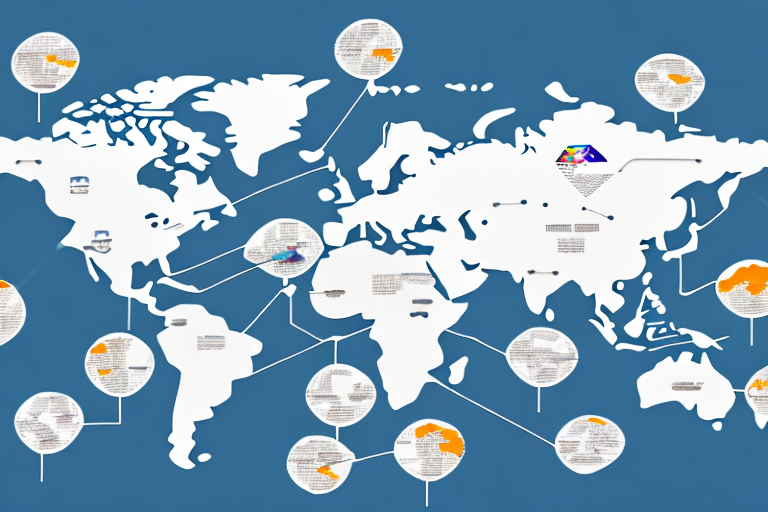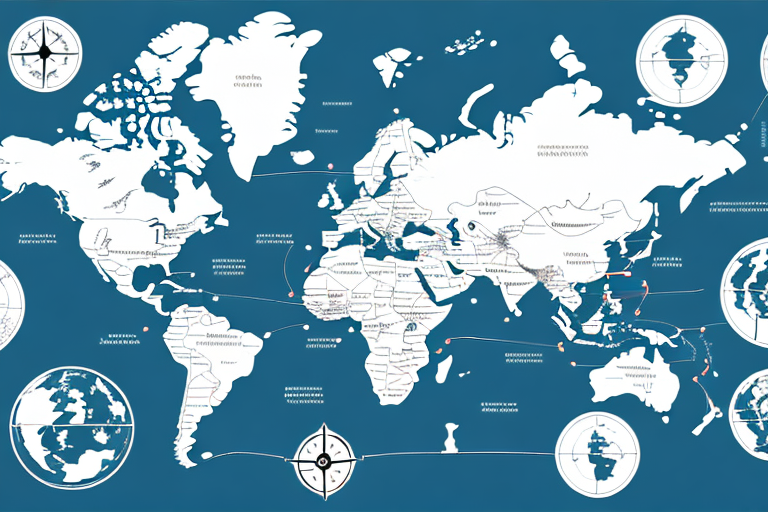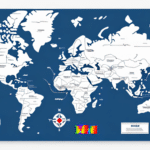A Comprehensive Guide to FedEx International Shipping Rates
If you're looking to send packages overseas, you've likely encountered a variety of shipping options. One popular choice is FedEx, which offers fast and reliable delivery to numerous international destinations. However, before you send your package with this carrier, it's crucial to understand their international shipping rates. In this guide, we'll explore everything you need to know about FedEx's international shipping rates, including how they're calculated, factors that influence pricing, and tips for reducing your costs.
Understanding FedEx's Shipping Zones and How They Affect Rates
FedEx utilizes a zone-based pricing system to determine international shipping rates. Every address worldwide is assigned to a specific zone based on its distance from the United States. Generally, shipping to farther zones incurs higher costs compared to closer ones. For example, sending a package to a remote location will typically cost more than shipping to a major metropolitan area.
Additionally, the zone system considers the package's weight and dimensions. Heavier and larger packages usually cost more to ship, even if they're destined for a closer zone. However, FedEx offers discounts for high-volume shippers and those who utilize their online shipping tools. By understanding the zone system and leveraging available discounts, you can effectively reduce your international shipping expenses.
Factors That Affect FedEx International Shipping Rates
Beyond shipping zones, several factors influence FedEx international shipping rates:
- Weight and Dimensions: Larger and heavier packages cost more to ship.
- Delivery Speed: Faster delivery options, such as FedEx International Priority, are more expensive than economy services.
- Origin and Destination: The countries involved can impact rates due to customs regulations and transportation costs.
- Delivery Service: Services like signature confirmation or door-to-door delivery may incur additional fees.
FedEx may also charge extra fees for specific deliveries, such as oversized items, hazardous materials, or packages requiring signature confirmation. Furthermore, the value of your shipment can affect rates. Shipping high-value items might necessitate additional insurance, adding to the overall cost but providing essential financial protection.
How to Determine the Right Packaging for Your Shipment
Choosing appropriate packaging is vital for minimizing shipping costs and ensuring the safety of your items. Consider the following when selecting packaging:
- Size and Weight: Use the smallest and lightest package that adequately protects your item.
- Protection: For fragile items, employ cushioning materials like bubble wrap or packing peanuts.
- Security: Valuable items may require tamper-evident packaging or reinforced boxes.
FedEx also offers flat-rate boxes that can provide cost savings for heavier shipments by offering a fixed rate regardless of weight (up to a specified limit).
Comparing FedEx International Shipping Rates with Other Carriers
Before committing to FedEx, it's advisable to compare rates with other major carriers such as UPS, DHL, and USPS. Each carrier may offer competitive rates for specific destinations or types of shipments. Utilizing a shipping rate comparison tool can help you identify the most cost-effective option for your needs.
When comparing carriers, also consider the level of service provided. Some carriers might offer faster delivery times or more reliable tracking, which is crucial for time-sensitive or high-value items. Additionally, relationships with customs officials can vary, potentially expediting the clearance process and reducing the risk of delays or additional fees.
Be mindful of additional fees or surcharges such as fuel surcharges, residential delivery fees, or extra charges for oversized packages. Always review the carrier's pricing details to understand the full cost implications before making a decision.
Tips for Reducing Your FedEx International Shipping Costs
Implementing cost-saving strategies can significantly reduce your international shipping expenses with FedEx:
- Select Slower Delivery Speeds: Opting for economy services can lower costs compared to priority options.
- Ship During Off-Peak Times: Avoiding peak shipping seasons may help you sidestep extra fees.
- Consolidate Shipments: Combining multiple packages into a single shipment can lead to savings.
- Use Digital Customs Documentation: Electronic forms can save both time and money.
Additionally, if you're a frequent shipper, consider negotiating rates with FedEx. High-volume shippers often qualify for discounted rates, so reaching out to your FedEx account representative could result in significant savings.
Utilizing a shipping calculator to compare rates across different carriers ensures you're getting the best deal for your international shipments.
Understanding the Different Types of Customs Fees and Taxes
International shipments are subject to various customs fees and taxes, which vary based on the destination country and the shipment's contents. Common fees include:
- Import Duties: Taxes on imported goods based on their value and classification.
- Value-Added Taxes (VATs): Consumption taxes applied to goods and services.
- Excise Taxes: Taxes on specific goods, such as alcohol or tobacco.
Researching these fees beforehand can help you avoid unexpected costs and delays. Additionally, some countries have strict regulations on items like food, plants, and animals, requiring special permits or inspections. Understanding and adhering to these regulations ensures your package complies with all necessary requirements.
How to Properly Declare the Value of Your Shipment
Accurately declaring the value of your shipment is essential for both customs purposes and determining appropriate insurance coverage. An accurate declaration helps prevent issues such as:
- Under-Valuation: May lead to penalties and insufficient coverage in case of loss or damage.
- Over-Valuation: Results in higher duties and taxes, increasing the shipment's overall cost.
When declaring your shipment's value, include all associated costs such as packaging, shipping, and handling fees to provide a comprehensive total value. Ensure that all documentation supporting the declared value is accurate and readily available.
The Importance of Accurate Shipping Documentation for International Shipments
Proper shipping documentation is critical for a seamless international shipping experience. Essential documents include:
- Customs Forms: Mandatory forms detailing the shipment's contents and value.
- Commercial Invoices: Detailed invoices required for customs clearance.
- Bill of Lading: A contract between the shipper and carrier outlining shipment details.
Inaccurate or incomplete documentation can lead to delays, fines, or even the confiscation of your shipment. It's also important to be aware of any restricted or prohibited items and ensure compliance with the destination country's regulations to avoid complications during customs clearance.
Navigating Potential Delays and Issues with International Customs Clearance
Despite thorough preparation, international shipments can still encounter delays or issues during customs clearance. Common causes include:
- Missing or incomplete documentation
- Restricted or prohibited items
- Discrepancies in declared values or quantities
If your shipment experiences delays, collaborate closely with FedEx and customs officials to resolve the issue promptly. Being proactive and responsive can help mitigate the impact of such delays.
Managing Returns and Refunds for International Shipments with FedEx
Understanding FedEx's international returns policy is essential if you need to send items back to the sender. Key considerations include:
- Return Requirements: Each carrier has specific requirements and potential fees for international returns.
- Insurance Coverage: For high-value or rare items, consider purchasing additional insurance to protect against loss or damage during the return process.
Always review FedEx's latest international returns policy to ensure compliance and avoid unexpected costs.
Best Practices for Tracking and Monitoring Your Shipment with FedEx
Utilizing FedEx's tracking and monitoring tools is crucial for staying informed about your shipment's status. Best practices include:
- Regular Tracking: Monitor your package's progress through FedEx's online tracking system for real-time updates.
- Notifications: Sign up for email or SMS alerts to receive timely notifications about your shipment's status.
- Customer Service: If issues arise, promptly contact FedEx customer service for assistance.
Effective tracking ensures you're aware of your shipment's location and can address any concerns proactively.
Understanding the Different Types of Insurance Coverage Options Available
Protecting your international shipments against loss or damage is vital. FedEx offers several insurance coverage options:
- Declared Value Coverage: Covers loss or damage based on the declared value of the shipment.
- Declared Value with Enhanced Liability: Provides higher coverage limits and additional protection.
- Package Enhancement Insurance: Offers comprehensive coverage for a variety of shipment risks.
Carefully review the terms and conditions of each policy to select the coverage level that best suits your needs and budget. For more information, visit the FedEx insurance options page.
Choosing the Right Delivery Timeframe for Your Shipment
Selecting an appropriate delivery timeframe involves balancing urgency and budget:
- Urgent Shipments: Opt for faster delivery services, such as FedEx International Priority, which offer expedited transit times.
- Cost-Effective Options: Choose economy services for less time-sensitive shipments to reduce costs.
Evaluate the needs of your shipment to determine the most suitable delivery option. Consider factors like the importance of timely delivery and the value of the items being shipped to make an informed decision.
In conclusion, this comprehensive guide to FedEx international shipping rates equips you to make informed shipping decisions. By understanding the factors that affect pricing, selecting the right packaging, and leveraging FedEx's tracking and monitoring tools, you can ensure a smooth and cost-effective international shipping experience. For more detailed information and resources, visit ShipScience.




















